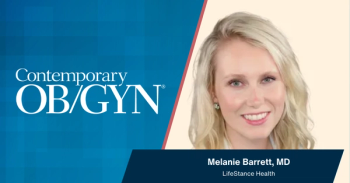
Guest Editorial: Professional liability: asphyxiation of the health-care system
Our patients are paying the price for a broken professional liability system that is allowing jury awards to escalate.
Ob/gyns are not alone in their response to the professional liability crisis. According to the American Association of Orthopedic Surgeons, 55% of orthopedic surgeons avoid at least some procedures and 5% have retired early because of liability concerns precipitated by rising insurance premiums. The next generation of patients, too, is at risk if the opinions of current medical students are a barometer of future practice patterns. In 2003, 61% of medical students surveyed said malpractice was a concern, up from only 15% in 2001.3 And many new ob/gyns say that the local malpractice "climate" influenced their choice of practice location.4
Despite these alarming statistics, tort reform at the federal level remains elusive. Yes, important state-level reforms have been passed, but the action has been piecemeal. And as we approach the sixth year of the current medical liability crisis, physicians still are on the defensive, fighting a formidable uphill battle and ongoing legislative stalemates. Federal reforms would be applicable to every state, but current proposals for federal reform indicate that state laws that are more restrictive would remain in effect. Premiums for malpractice insurance are rising in more and more states across the country, and the crisis is beginning to extend beyond the closed doors of individual practices and threatening to imperil competition nationwide. If businesses are constrained from relocating to areas with limited physician access, entire communities could suffer socially and economically. The federal government, too, could be impacted because it insures a significant portion of the population in some of the geographic areas where access to care is dwindling. And it's not just obstetric and prenatal services that are in short supply. Family planning services, preventive care, and screening for early detection of gynecologic cancer are also in jeopardy.
And then there are the sensationalized stories in the press that highlight skyrocketing judgments, like the $95 million award made in New Jersey in 2002, and suggest that the problem is "bad" doctors. In many states, that kind of thinking has led to a "lottery" mentality among patients and trial lawyers and a groundswell of righteous indignation from patient advocates. The fallout, as previously mentioned, is cutbacks in ob/gyn practice precipitated by the crisis' direct impact on physicians' finances.6
Newsletter
Get the latest clinical updates, case studies, and expert commentary in obstetric and gynecologic care. Sign up now to stay informed.










